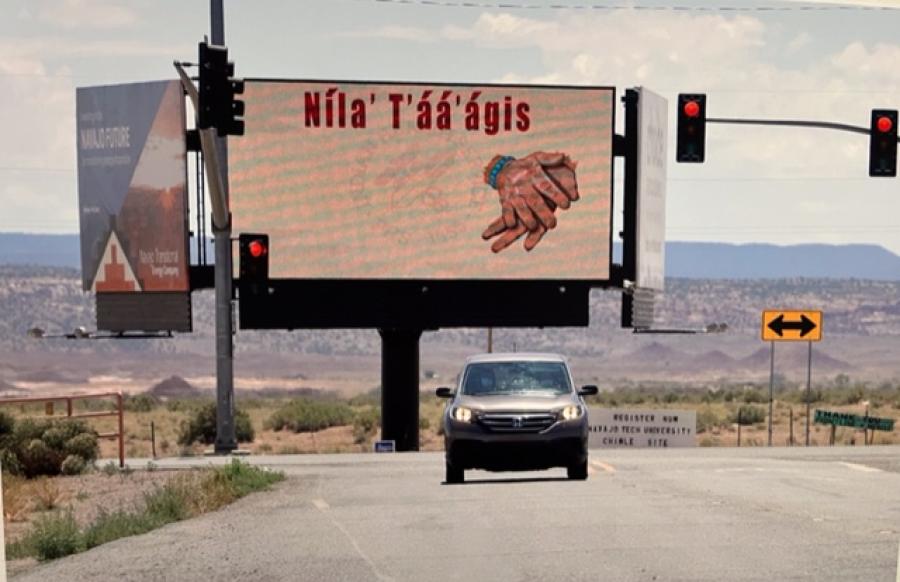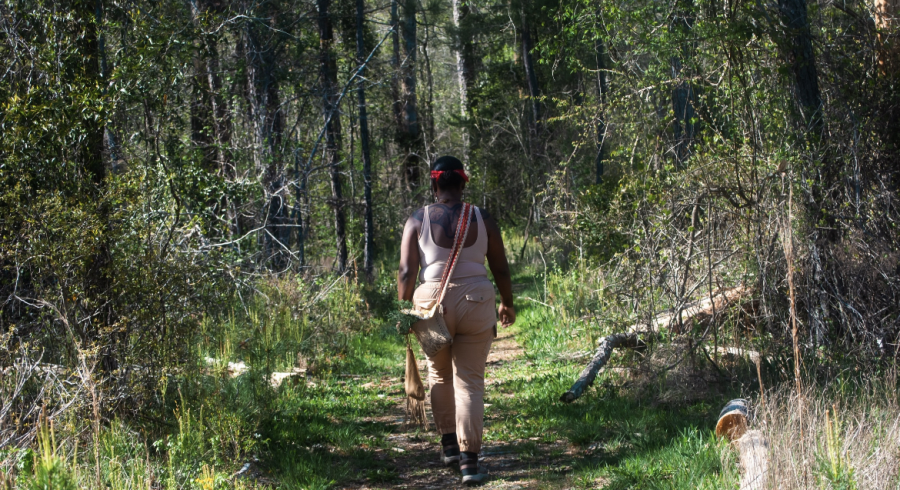If you look at Rick Bartow’s artwork you might assume that he is a highly trained, lifelong artist. Certainly his résumé supports that notion. His paintings, drawings, and sculpture are in the collections of a half-dozen museums around the world, including the National Museum of the American Indian, as well as corporate headquarters, upscale stores, and universities from Arizona to Tokyo. They are also featured in 22 books. He’s been profiled in dozens of magazines, and his list of solo and group exhibitions fills five tightly spaced pages.
Yet Bartow, who is a member of the Wiyot tribe in Northern California, did not come from an artistic family, nor does he have any formal education in art. “I spent most of my life trying to avoid it, to tell you the truth,” he says. “I was a bartender and a maintenance manager for a hotel, and I was a scrimshander for about three years. I also spent 10 years working with handicapped children in classrooms. My parents were bartenders and bar maids and loggers and fishermen, and consequently I always felt I was missing part of the deal if I didn’t have a straight job. But in and around that, from the time I can remember, I was drawing. Against all criticism I kept drawing. I joined the army, and they don’t give you much time for drawing or thinking, so I would draw in the margins when I was supposed to be taking notes. When we were out in the field I would make sculptures out of leaves and sticks and grass. It was in me, and like Jonah and the whale I denied that spirit, and finally, when I was swallowed entirely by the whale and spat out on another shore, with the help of my late wife and friends I was able to approach it.”
Bartow says that much of his early work was about exorcising demons, and he had plenty of demons to deal with, including a tough tour of duty in Vietnam, drug abuse, and alcoholism. “When I returned from Vietnam, like so many others, I was a bit twisted,” he has written. “I was a house filled with irrational fears, beliefs, and symbols. Wind-blown paper would send me running; crows became many things; I never remembered dreams and detested the wind; I wore bells on my wrists so I could hear my parts when they moved; I slept in my clothes so I’d be ready to go nowhere at all. And I recall once answering when asked my name and where I was from, ‘Nobody. Nowhere.’ I must have been a wonderful companion.”
“Years ago I had one art exhibit here of the early work,” he says. “It was all black and white, because all I could afford then was graphite sticks and 20-cent sheets of paper. After that exhibit it was about three years before the Bible tracts and anonymous phone calls praying for my soul stopped. In fairness, though, that early stuff was pretty horrendous. I had buried a lot of monsters with alcoholism and drug abuse, and when they started getting out of the box, I lost the lid and couldn’t put it back.”
His work today is still often dark, but it is more mystical than maniacal. That sense is helped by Bartow’s frequent combination of animals and humans—a woman with a hawk’s head, a wolf with hands instead of paws. It is in this aspect that Bartow’s Wiyot roots are most evident, since many of his people’s stories and spiritual traditions feature exactly this sort of transformation. But, he says, he rarely sets out to explicitly make reference to his cultural heritage. “Most of the time I’m just working,” he says. “Something will work its way up, and I’ll say ‘Oh, there’s a coyote.’ And maybe the night before I’d been at a ceremony and someone told a good coyote story. So I say, ‘Maybe I could put a woman over here.’ Then I’ve got a story about the coyote tricking the women that had captured all the salmon or something. Or maybe it’s an experience that I have had that was cathartic and relates to some mythic element. Or sometimes it’s neither of the above.”
Bartow does, however, make artwork that is very deliberately tied to his culture. “In the native community there are a few things I do for the elders,” he says, “making sacred whistles and wing fans and rattles. That’s a whole other discipline, and indeed it takes discipline. There are rules and regulations and whys and wherefores. It’s completely the opposite of the other things I do because one is completely unbridled and the other is completely bridled and nailed to the wall; you can only do certain things.”
One of the striking things about Bartow as an artist is his flexibility. Many artists who work in a variety of mediums tend to simply transfer their signature style to the new material, imposing a painter’s vision on clay, for example. But Bartow approaches each medium on its own terms. Certainly there is his distinctive sensibility in evidence everywhere, but the concept of the piece flows from and works with the material in question. His wooden assemblages take advantage of the rough and ready nature of the materials, while his ceramics use the more fluid nature of clay. His drawings favor the precision of that medium while his graphite and pastels are dense and abstract and his acrylics are bold and layered. This, he says, is the result of having learned from his artist friends, who each enthusiastically led him into their chosen medium.
Bartow’s work is radical in some ways, and not everyone’s cup of tea. Even his family didn’t always appreciate it: “I once did a picture of my old Indian uncle, who lived next door to me, and when I showed it him he said, ‘Put it in the barn; it will keep the rats out.’ Sometime later I went to an exhibit of Pacific art, and I was just knocked out by these African pieces that had nails in them. When I came home, the first piece of wood that I came across that had nails it in was an old fence post, so I started yanking up fence posts from my uncle’s pasture and cutting them up. I was making dogs and people, and I starting pounding more nails in. My uncle just thought it was crazy. He could barely contain himself when he saw those; they made him incensed. Then, when the first one sold for $1,500 at the gallery, he started bringing me fence posts. I knew then that I was amongst the counted.”



